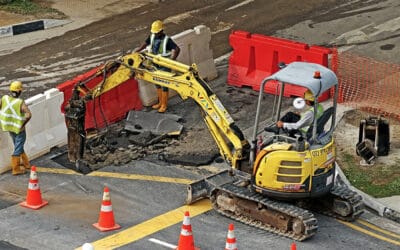Field service connectivity encompasses a wide range of industries, such as maintenance and repair services, logistics, and transportation. Traditionally, field service personnel relied on manual processes and limited connectivity to carry out their tasks. However, with the advent of the IoT, these industries are experiencing a major shift in how they operate and deliver services. Let’s explore in more detail how the IoT is transforming field service connectivity and the benefits it brings.
Enhanced Communication and Real-time Data
One of the key benefits of IoT in field service connectivity is the ability to establish seamless and instantaneous communication between field technicians and their central support systems. Equipped with IoT-enabled devices and sensors, technicians can transmit real-time data directly to a central hub, allowing for quick and accurate decision-making.
For example, in the maintenance and repair industry, IoT devices embedded in equipment and machinery can monitor their performance and send alerts in case of any anomalies. This real-time data enables technicians to proactively address issues before they turn into major breakdowns. With real-time data, technicians can diagnose problems remotely, optimize maintenance schedules, and even initiate remote repairs where possible.
This enhanced communication and access to real-time data also enable organizations to provide better support to their field technicians. Central support systems can remotely guide technicians through complex procedures, reducing the need for unnecessary site visits and minimizing downtime. This not only improves efficiency but also enhances the overall service experience for customers.
Predictive Maintenance and Efficiency
Another significant advantage of the IoT in field service connectivity is the predictive maintenance capability it offers. By leveraging data collected from IoT devices, machine learning algorithms can analyze patterns and forecast when equipment is likely to fail. This proactive approach allows organizations to schedule maintenance work in advance, reducing downtime and the cost associated with reactive repairs.
Predictive maintenance not only saves money but also improves operational efficiency. By avoiding unexpected breakdowns, organizations can keep their equipment running smoothly, ensuring uninterrupted service delivery. This, in turn, leads to greater customer satisfaction and loyalty.
Furthermore, IoT-enabled devices provide field service technicians with access to extensive historical data about the equipment they are servicing. This information enables them to identify recurring issues, optimize troubleshooting processes, and provide more accurate resolutions. Ultimately, this leads to greater efficiency and improved customer satisfaction.
Optimized Resource Allocation and Tracking
IoT technology also plays a crucial role in optimizing resource allocation and tracking in field service connectivity. By equipping vehicles, tools, and equipment with IoT sensors, organizations can remotely monitor their location, usage, and condition. This real-time visibility enables efficient deployment of resources, ensuring they are allocated where they are needed most.
For instance, logistics companies can track the location and condition of their fleet vehicles, making it easier to plan routes, schedule maintenance, and streamline operations. Additionally, IoT-enabled tracking systems can help locate lost or stolen assets, minimizing the chances of loss or theft. This enhanced tracking capability not only improves security but also reduces operational costs and enhances overall productivity.
The Challenges of IoT in Field Service Connectivity
While the IoT offers significant benefits, implementing and managing it in field service connectivity also presents several challenges. One of the main concerns is data security. With the large amount of data being transmitted between devices, ensuring the confidentiality, integrity, and availability of this data becomes crucial. Organizations must invest in robust security measures and protocols to protect sensitive information from unauthorized access or tampering.
Another challenge is the interoperability between different IoT devices and systems. As the IoT ecosystem continues to expand, it becomes essential for devices from different manufacturers to communicate seamlessly with each other. Standardization efforts are underway to address this challenge and facilitate interoperability, but it remains an ongoing process.
Moreover, organizations need to invest in appropriate training and skill development programs for their field technicians. As the IoT brings new technologies and processes into the field service industry, technicians must be equipped with the necessary knowledge and skills to leverage these advancements effectively. Continuous training and upskilling initiatives are vital to ensure a smooth transition to IoT-enabled field service connectivity.
Conclusion
The Internet of Things is transforming field service connectivity in numerous ways. The enhanced communication, real-time data access, predictive maintenance, and optimized resource allocation made possible by IoT technology have revolutionized various industries.
As the IoT continues to evolve, organizations must embrace this technological shift to stay competitive and provide exceptional field service experiences. By harnessing the power of connectivity and data, they can unlock new levels of efficiency, cost savings, and customer satisfaction. The IoT has opened up a world of opportunities for field service connectivity, and those who embrace it will undoubtedly be at the forefront of innovation in their respective industries.
While there are challenges to overcome, such as data security and interoperability, the benefits of IoT in field service connectivity far outweigh the challenges. With proper implementation, organizations can transform their field service operations, achieve higher efficiency and profitability, and deliver exceptional customer experiences. The IoT is reshaping the future of field service connectivity, and organizations must leverage its potential to thrive in the digital era.
Aimsio dedicated to optimizing field service operations to enable organizations to harness the full power of connectivity and data. Embracing IoT technology through solutions like ours will ensure that your organization stays ahead of the curve, maximizes efficiency, and delivers unparalleled field service experiences in today’s rapidly evolving digital landscape.




